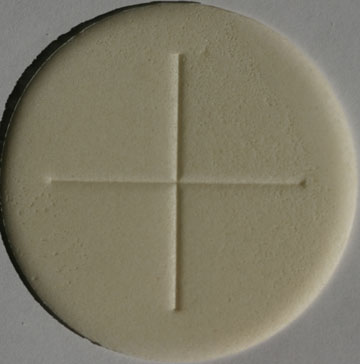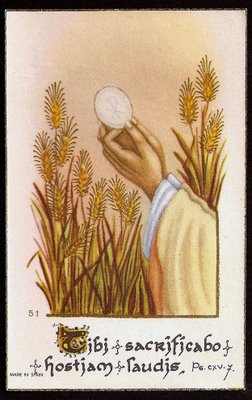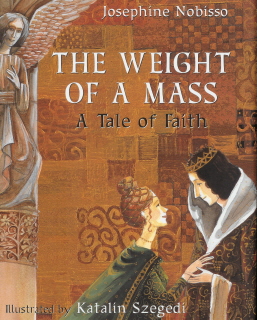Catholic priests—unlike Protestant ministers—offer a Sacrifice to God: the Mass. Before Mass they bring out a little disc of bread and some wine which they pour into a cup and if you watch them during Mass you will see them lifting that disc and that cup up to God in offering.
What’s it all about?
Well: if you went back in time two thousand years ago in the Mediterranean world you would find that bread and wine were the basic elements of a meal. If you went to an ordinary person’s house and sat down to eat, this is what you would get. Meat was for feasts; vegetables comparatively rare.
So: the Mass is a Sacrifice? But the Mass is also a Meal?
Yes. The Mass is the reenactment of some actions that occurred during a meal that the Bible tells us occurred the night before Jesus died.
That meal is usually called, The Last Supper.

Leonardo Da Vinci's 'The Last Supper'
Here is the account of the heart of the Last Supper as told in St. Matthew’s Gospel:
And as they were eating, Jesus took bread, and blessed it, and broke it, and gave it to the disciples, and said, Take, eat; this is My Body.
And He took the cup, and gave thanks, and gave it to them, saying, Drink this, all of you; For this is My Blood of the New Covenant, which will be shed for many for the remission of sins.
Matthew 26: 26-28.

An Icon of the 'Mystical Supper'
And at the heart of the most solemn part of the celebration of Mass, a Roman Catholic priest will say these or similar words:
The day before He suffered, He took bread in His Sacred Hands and looking up to heaven, to You, His almighty Father, He gave You thanks and praise.
He broke the bread, gave it to His disciples, and said:
Take this, all of you, and eat it:
THIS IS MY BODY WHICH WILL BE GIVEN UP FOR YOU.
When supper was ended, he took the cup. Again He gave You thanks and praise, gave the cup to his disciples, and said:
Take this all of you and drink from it:
THIS IS THE CUP OF MY BLOOD, THE BLOOD OF THE NEW AND EVERLASTING COVENANT.
IT WILL BE SHED FOR YOU AND FOR ALL SO THAT SINS MAY BE FORGIVEN.
DO THIS IN MEMORY OF ME.
What do these strange words mean? What kind of a Sacrifice do they make? And how do they relate to what the Bible tells us Jesus did so long ago?
Well, the strands may be beginning to come together: This Sacrifice has something to do with Jesus’ death on the Cross.

The Last Supper-from Mel Gibson's 'The Passion of the Christ'







